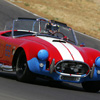This shows the position of the rear swaybar and the swaybar ends in realation to the right and left hub carrier. I bent my sway bar to give me the clearance shown from the end of the sway bar to the hub carrier. I can easily get the bolt out and make adjustments in this position, (normal ride height). This also shows the upgrade to poly bushings instead of the rubber bushings.




 Reply With Quote
Reply With Quote









 !
!